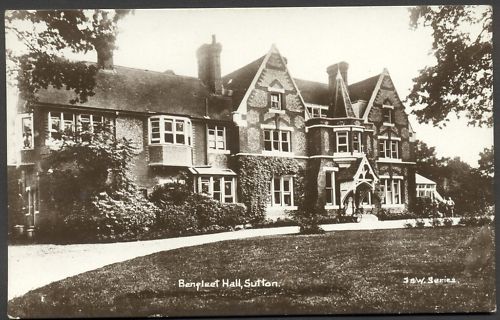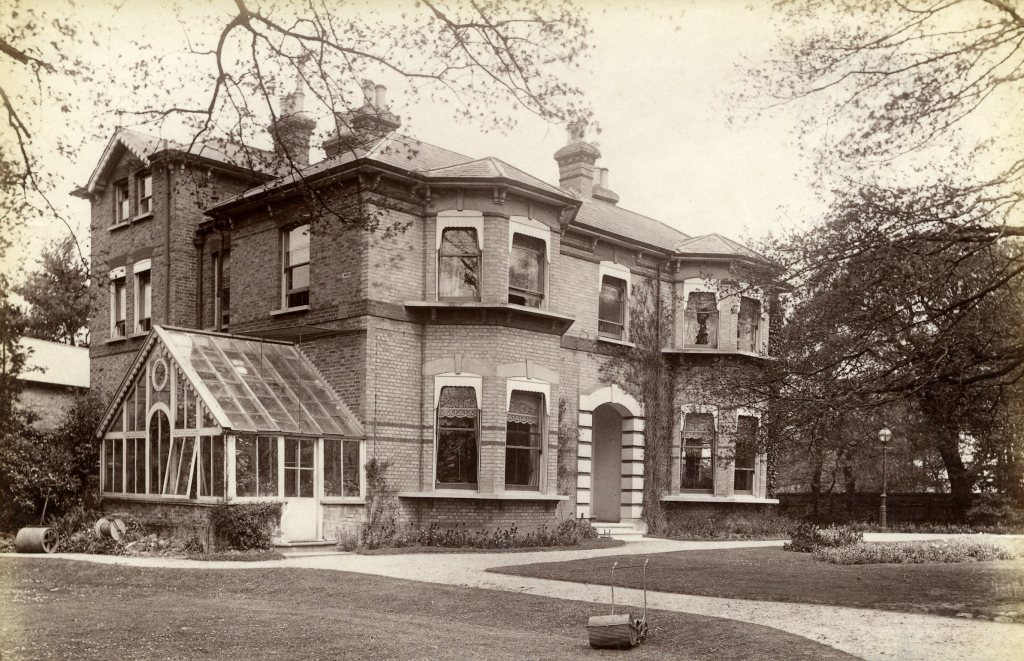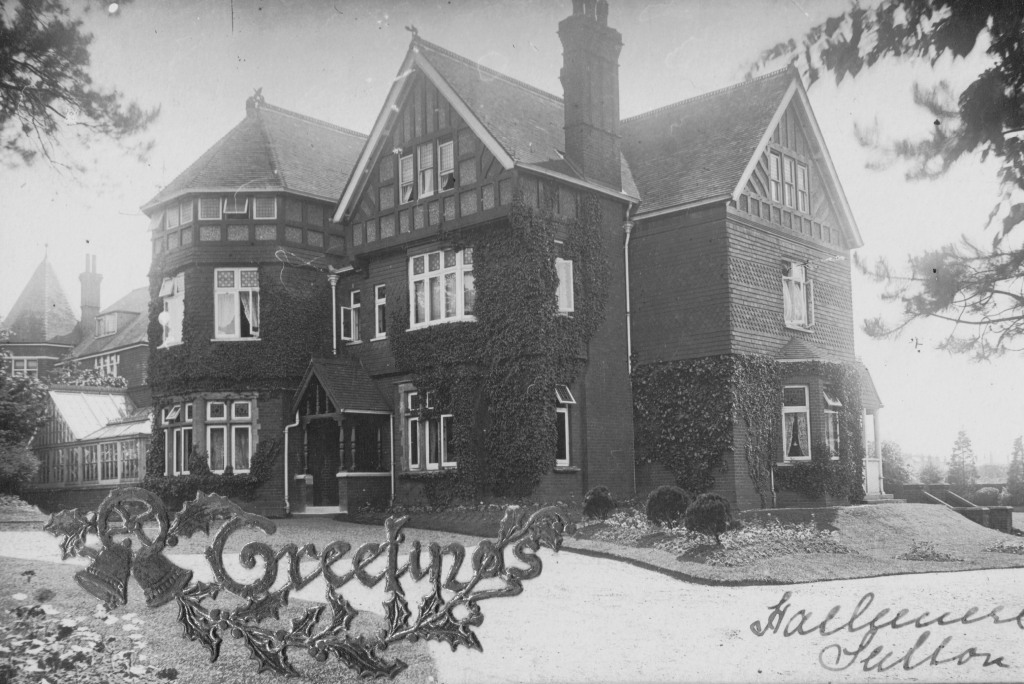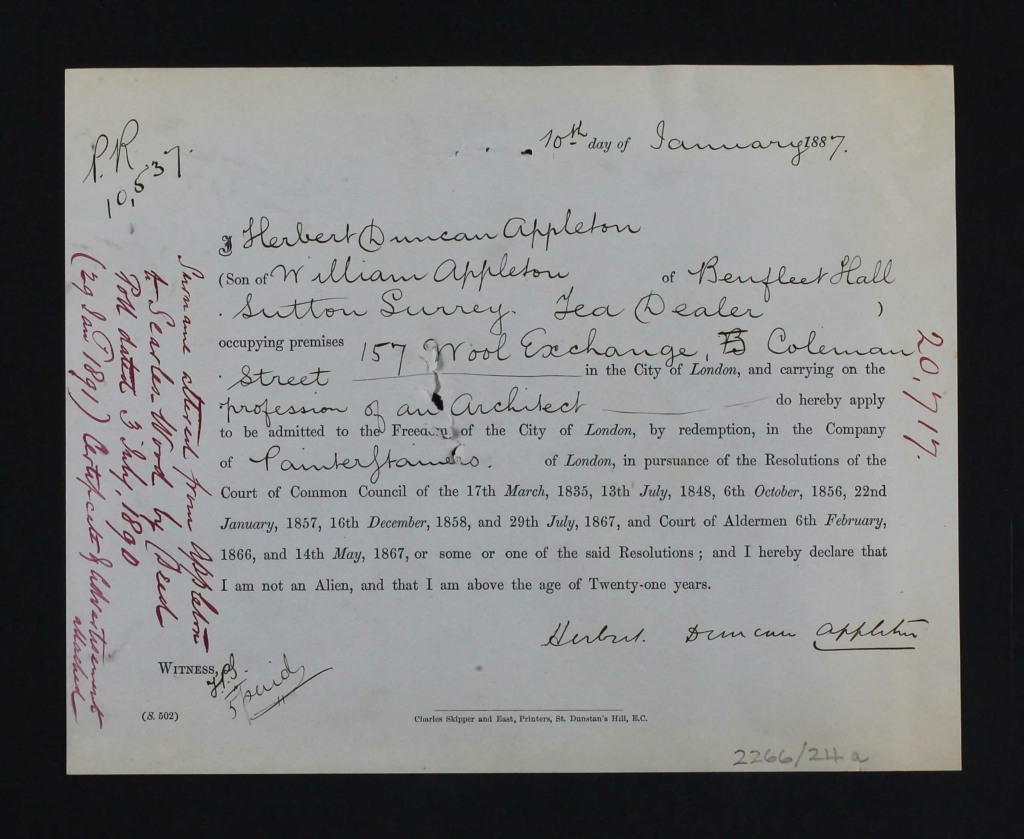In the last episode of our house history series, volunteer Clive introduced us to the short tenure of Rev. Francis Grosvenor at Benhill House, and his fascinating connection to Epsom Workhouse. In today’s blog, we see the first mention of the property as Benfleet Hall, and the origins of this new name. Changing property names or numbers can be challenging for those researching the history of their homes, but renames are surprisingly common, subject to the whim of new owners, of planning departments or of residential expansion and development. Both maps and street directories can be invaluable in unravelling these kinds of mysteries, providing stable reference points such as intersecting streets or long standing businesses, and referencing those useful neighbours whose occupancy spans decades at one address, becoming a useful anchor as the road and property names and numbers change around them. Council minutes can also provide information about road name changes in an administrative area and sometimes offer the reasons behind them. Sutton Archives can provide both these types of sources for those looking at house history in the borough, so do get in touch if you’ve reached an impasse in your own research journey. Over to Clive…

After Rev. Francis Grosvenor moved to a smaller house in Cheam Road, I know little about Benhill House or its occupants throughout the 1880s. It appears to have been empty at the time of the 1881 Census, and the next occupant that I can trace is William Appleton, who was living there by 1890. He had moved there from a house called The Arches in Angel Hill, where he had been living in 1880 and 1881, but I don’t know exactly when he moved. It is likely that it was he who changed the name of the house to Benfleet Hall; there had been a Benfleet Hall in Benfleet, Essex, which had been owned by the Appleton family until the early 18th century. William may have recalled family history in choosing the name.
So who was William Appleton, where was he from, and what did he do? When we first meet him in Sutton, he was a rich tea merchant running the family business. He had been born into a Non-Conformist family in the North Brixton district in 1821 and was baptised at the Vauxhall Chapel in Kennington Lane. He was still living with his parents in Stockwell in 1841, and in 1845 he married Charlotte Thompson Pewtress in the Gravesend district, although she had been born in Camberwell. You might think that with such an unusual surname she would be easy to trace, but in fact it’s difficult to find references to any Pewtresses. William and Charlotte had four sons:
William Knibb, born in 1846 in Kennington Lane,
Walter Pewtress, born in 1849 in Stockwell,
Herbert Duncan, born 28 April 1853 in Stockwell, and
Harold Stanley, born 1859, probably also in Stockwell,
but no daughters. William Knibb was named after a Baptist missionary to Jamaica, who was well-known for his work against slavery and died in 1845. Harold died in 1863 at the age of 3, but the other boys went on to successful careers, as we shall see. Most, if not all, of their life together as a family was spent at Blakesley Villa, Queen’s Road (now Stockwell Road). William senior’s brother Alfred and his sister Susanna (by then the widow of Samuel Pewtress) lived next door at Blakesley House with her two sons, Thomas and Arthur. A curious event is recorded in the 1861 Census: the two Williams, Charlotte and Walter were visiting the Gould family at Trap’s Hill House, Loughton, Essex, while Herbert was recorded as head of household (age 7!) at Blakesley Villa, together with baby Harold, a cook and a nurse.
In the 1870s the sons started to leave home. In 1872 Walter married Alice Harriette Gold in the Gower district of Glamorgan. She was born in Leicester Square in 1852, does not appear in the 1861 Census, but may be the Eliza Gold who was recorded in Oystermouth, on the Gower, in the 1871 Census. William junior soon followed, marrying Elizabeth Spencer on 22 April 1874 at All Saints’ Benhilton. Her father was a bank manager living in Sutton Common (Road); this visit to Sutton may have influenced William senior’s decision to move to Sutton. After their marriages, Walter and Alice moved to Bryn-Heilog, 51 Honor Oak Road, Forest Hill; and William junior and Elizabeth to Strathblane, Park Road, Wallington. In 1890, at the age of 37, Herbert married Bessie Tooke, who was 23, at All Saints’ Benhilton. She was the niece of Elizabeth Wood, who lived at The Hilton, across the road from Benfleet Hall.

Bessie had been born in Tottenham in 1866 to George Theodore Tooke (a cabinet maker) and his second wife Mary Ann (née Gayler). She was living with them in 1871, but by 1881 she was recorded as head of household (age 14!) at 2 Manor Terrace, Felixstowe, and described as “scholar (in charge)”, with a cook. By 1884 she had been adopted by Searles Valentine Wood (adoption was a less formal process then). He was a solicitor and amateur geologist from Suffolk, who had married Elizabeth Gayler (Mary Ann’s sister) in 1853. They had no children, and Searles died in 1884. When Herbert married Bessie he took the surname Searles-Wood under the terms of Searles’ will. At first they lived at The Nook in Benhill Road, which may have been in the grounds of Benfleet Hall.
After all their sons had married, William and Charlotte continued to live at Benfleet Hall, with three domestic servants. There was also Francis Gregory (coachman) living in the lodge with his wife Rosa, their daughter Ethel and son Basel, and William Winter (gardener) living in the park lodge with his wife Lucy and their son Frederick. But the Appletons were not there for much longer – both were in their seventies; Charlotte died in 1896 followed by William in 1898. Their furniture and effects were sold off, including two horses, four cows, two calves and assorted poultry, and the house was put up for sale.
I shall now follow their sons’ careers; briefly for William junior and Walter, but at more length for Herbert, as his seems more interesting to me, as well as being more related to Sutton. William junior went into the family business as a tea merchant. By 1881 he and Elizabeth still lived at Strathblane, with four children and three domestic servants. In 1887 he moved to a new house called Haslemere, at 66 Brighton Road, built for him by Herbert. He lived there until his death in 1940; Elizabeth had died in 1928. During WW1 William served in the VAD (the Voluntary Aid Detachment: a civilian unit providing nursing care for military personnel). Walter had branched out, describing himself as a stationer, an envelope manufacturer, a stationery manufacturer and a paper merchant at successive Censuses. He and Alice lived at Bryn-Heilog from their marriage until he died in 1913. Alice probably died in the Lewisham district in 1938. They too had four children, all of whom had left home by 1911.

Image Credit: UK Photo & Social History Archive, www.ukphotoarchive.org.uk/photos-of-sutton-1900-1950s-haselmere-brighton-road-1918.
After their marriage in 1890, Herbert and Bessie continued to live at The Nook until at least 1896, by which time they had three children: Valentine (b. 1892), Lionel (b. 1894, but died in the same year), and Christine (b. 1896). Herbert was baptised on the same day as Valentine, at All Saints’ Benhilton. By 1901 they had moved to a new house in Christchurch Park, called Blakesley, which Herbert had designed, along with several other houses in the road. They had two more children there – Sadie (b. 1901) and Violet (b. 1904) – and lived at Blakesley until they died (Bessie in 1931 and Herbert in 1936).
Herbert began to practice as an architect in 1875, and was already successful before he married Bessie; for example, he worked on the design for the Painter Stainers Hall and Chambers, for which he was made a member of the Painters Stainers Company and admitted to the Freedom of the City of London in 1887, an honour which Valentine also acquired, in 1916. According to an obituary, he also designed St Paul’s Church, Forest Hill (1882) and Beckenham Baptist Church (1883-84). The new Infirmary for the Epsom Workhouse (1890) was his work, as was the Cuddington Infectious Hospital (1897), and “many banks, warehouses, factories and private houses”. He became a Fellow of the Royal Institute of British Architects (FRIBA) by 1891, and served on many professional bodies, as well as teaching and writing textbooks.

Credit: London Metropolitan Archive, ref. no. COL/CHD/FR/02/2620-2622.
His biggest project was probably the plan for the Wimbledon and Sutton Railway, which was proposed in 1908 and received an Act of Parliament in 1910. It was described at the time as “peculiarly optimistic”. In the original plan, the line ran south-west from the District Railway platforms at Wimbledon station as far as the (then) grounds of the All England Lawn Tennis and Croquet Club in Worple Road Wimbledon (the venue for lawn tennis in the 1908 Olympics), where there would be a station. It then crossed under the main line to follow the present route, but terminated on the Cheam Road between Saint James Road and Sherwood Park Road. Many changes to the plan followed, both for practical reasons (the All England Club moved to its current site in 1922, for example) and due to disputes between the companies involved. Work didn’t start until 1927 and the line was completed in 1930. Herbert probably had little to do with the project after 1924, when the Wimbledon and Sutton Railway was dissolved and the project taken over by the Southern Railway, but at least he had the satisfaction of seeing the project finished before he died. I wonder if he ever rode on the line.




Really interesting, thanks! I’m aware of another grand house which used to be in Ringstead Road – “Glenwood” – which might be worthy of some similar research. The sale plans from the early 1900’s are in the archives and are beautiful! I believe it ended up being a school set up by the man who went on to found Ewell Castle school. I’ve tried do go some preliminary research myself, as the garden wall backs onto my garden.
LikeLike
Thanks for your comment Katy. We always welcome guest bloggers if you fancy having a go at this research yourself. But I’ll bank this as a suggestion for future posts. Thanks!
LikeLike
Pingback: A House Through The Ages, S2, Ep8: Its Finest Hour | The Past on Glass & Other Stories...